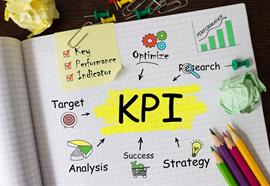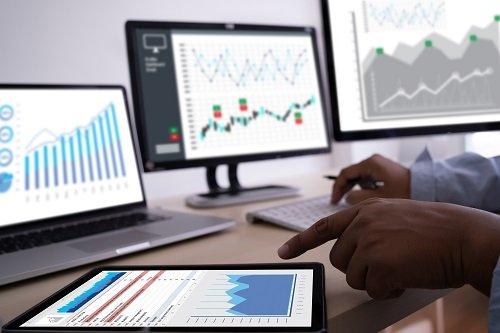Learn about the evolution of digital tracking, statistics, and KPIs
Mobile Marketing Measurement
In today’s technology-driven world, mobile phones are the first line of inquiry when it comes to consumerism. These mobile platforms create ample opportunities for marketers.
However, this new platform also requires a certain amount of evolution in regards to marketing measurement. With this new mobile trend, measurement no longer follows the same behavioral patterns as it used to. Many prominent marketers are now changing their approach to how they measure results.
Imagine you have the need to purchase a new computer. Where do you start? If you are like most consumers today, you would pull out your smartphone and start researching different types of computers on the internet.
Copious amounts of need-based research are done before you ever set foot in a Wal-Mart or Best Buy. This same method of research-before-purchase shopping applies to most consumers today regardless of generation (although certainly, mobile usage is highest in the millennials).
Whether you are searching for a new microwave or planning trips to a resort, consumer decisions are based upon brief moments (micro-moments even) of binary decision and curious research (buyers journey).
The Mobile Consumer Statistics and KPIs
This new consumer behavior creates marvelous opportunities for smart brands to relate with their customers. However, this newfound trend also presents nuance’s when measuring the impact of our media on the audience.
Many of our modern marketing rules were created when consumerism was mainly a desktop-driven market. With the rising prominence of mobile shopping, we must evolve our guidelines for measurement just as the market itself has evolved.
Developing a fresh approach that reflects the modern consumer’s online pathway or buyer’s journey is crucial to 
Successful marketers are twice as likely to exceed their business goals when transitioning to a more integrated measurement model. What does this mean exactly? Marketers are re-evaluating their approach to measurement with positive results.
In order to comprehend how we can all benefit from revamping our measurement models, it is important to analyze the mindset of these new-age marketers.
Focus on Business Goals First and Foremost
To start with, these successful marketers focus on their business goals first and foremost. When digital marketing was in its early years, marketers invented a set of Key Performance Indicators or KPIs to track how digital marketing affected the consumer’s online path.
These KPIs include data such as return on ad spend (ROAS), click-through rate (CTR), cost-per-acquisition (CPA), and more. However, these data sets fail to capture all modern mobile phones influence and the path of consumer purchases. Over 70% of smartphone users first research their products of interest before buying them at a storefront. So, whether you are selling from an online marketplace or a physical storefront, these mobile assists are of great importance to your business.

To remedy this problem, marketing KPIs need to be tied to wider business goals. In order to do so, one must ask the hard questions like “is a return on ad spend (ROAS) keeping my business from reaching my customers?”. The smart marketer addresses their business goals first, then proceeds to prioritize their marketing data to align with those goals.
Another trait of the smart marketer is the ability to not only recognize gaps in consumer behavior but bridge them as well. What used to be a fairly simple consumer path-to-purchase (buyer’s journey) is now a complex web of consumer interest and research.
As this web gets more and more complex, gaps in consumer patterns are bound to follow. In light of these gaps, leading marketers use estimates to fill in holes in consumer trends. Through active estimation and testing, they are informed and connected with their consumer’s needs.
When the marketer is more in tune with their consumer’s needs, it becomes easier to make accurate and beneficial alterations to your business goals.
Each unique brand or business will have its own unique gap. In order to make an accurate estimate, marketers often require their tools-of-the-trade such as Google Analytics, search console, CRM’s, or internal data. Nonetheless, leading marketers illustrate the importance of pinpointing and bridging these gaps.
The controlled Gamble with Statistics and KPIs
New-age marketing is a healthy mix between gambling and science but is confirmed by the end result. “Big-bet” experiments are a crucial asset of the smart marketer.
Though the term “experiment” may bring the connotation of fine-tuning or optimization (which in part is the case), in the evolution of progressive marketing the term is more analogous to its scientific meaning. The smart marketer starts with a hypothesis and acts in the digital world to prove or disprove the said hypothesis. These high-risk strategic gambles actively reveal new mobile opportunities that would otherwise remain hidden.

It is not only beneficial but essential to ask yourself how you can evolve your own business to keep up with the modern world. Do you know where to attribute the impact of mobile devices to your business? Do your KPIs reflect your business goals? And, how can you work to better bridge the gaps left by the research-first mentality of the modern consumer?
Smart marketers do not have a perfect KPI or a secret tool for success. What they do have, is the mindset required to jump on new opportunities and overcome hurdles in the process. The smart marketer has the flexibility to redefine measurement in relation to growth. This mindset is what propels the marketing industry in an ever-changing world.
Read the Top 50 KPIs for Mobile Apps: The Ultimate Guide here.
Please comment on the questions below:
What are some of your favorite go-to Mobile Marketing KPIs?
Do you believe in attribution as a way to gauge campaign success?
Save
Save
Save
Save
Save

Allan Todd is CEO of Pagecafe Digital Marketing. In 2022, Allan teamed up with Infront Webworks to provide digital marketing, website design, content marketing, SEO and strategy and solutions to local businesses. Allan lives in Colorado Springs.


